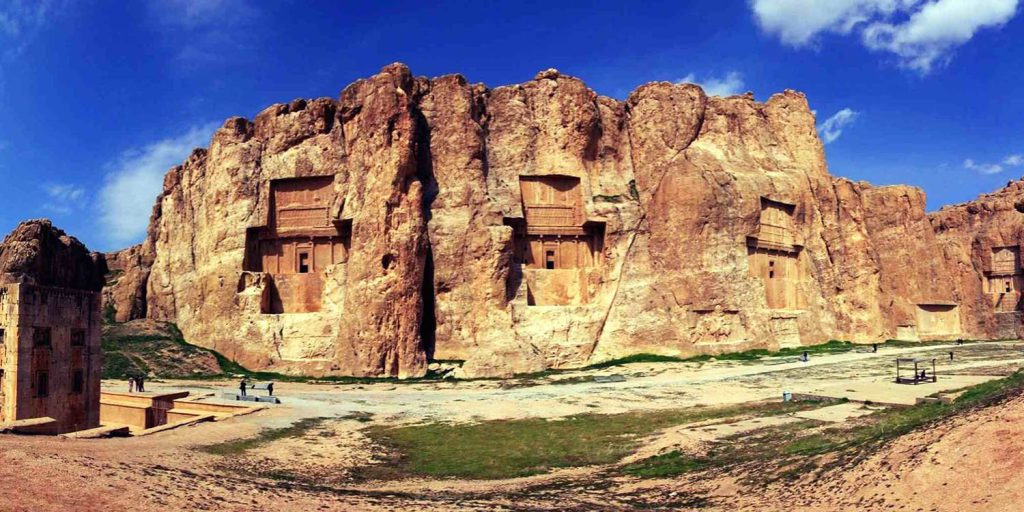
Menu

Naghsh-e Rostam is an ancient complex in Zangiabad located north of the city of Marvdasht in the province of Fars in Iran, 6 km from Persepolis. This ancient site contains monuments of Elamites, Achaemenids and Sassanids and has always been considered from around 1200 BC. Here and during the Sassanid era, the region of Naghsh-e Rostam was also very important from a religious and national point of view.
The name Naqsh-e Rostam was probably given to this place after the Iranians had made contact between Rostam, the hero of the Shah-Name, and the lithographs of the Sassanid kings.

The oldest relief in Naqsh-Rosta, is related to the Ilam period, which represented the relief of the king and queen, but then in the Sassanid period, Bahram II erased parts of it and replaced its relief and that of his courtiers.
Zoroaster’s Kaaba is a stone, tower-like structure in this area, which was likely built in the Achaemenid era and its use has yet to be determined. Among the Sassanid kings, Ardeshir Babakan was the first to engrave lithographs in this region. In this relief, the king receives the ring of power from Ahura Mazda.
The Achaemenid kings after Darius the Great built their tombs on the walls of Mount Mehr, which respectively belong to Darius the Great, Xerxes, Ardashir I and Darius II.
Richard Fry writes that these tombs must have been built deep in the rocks of the mountain to prevent soil contamination from colliding with human corpses.
The tomb of Darius the Great is located 26 meters above the ground and the stone inscriptions in this tomb prove that the tomb belongs to Darius I.
Darius the Great died in October 486 BC and was buried in the heart of the mountain.
Main office: Office no. 5, First Floor,Building No. 404, Corner of Beheshti St. and Qaem Maqam St. Tehran Iran.
Tel : +985138519585 EXT. 117
WhatsApp : +968 912 14 982
Email : info@persiantoursgroup.com